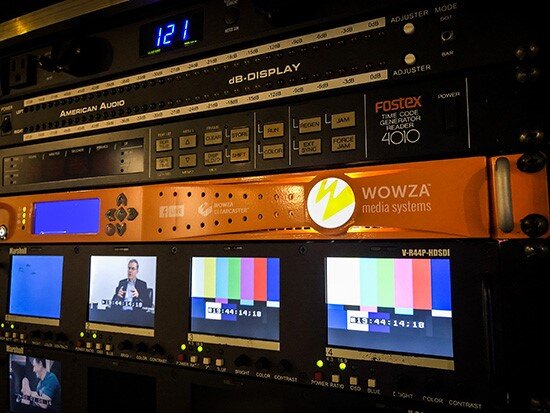Whether you have heard of the social gaming platform called Twitch or not, it is definitely something to keep on your radar for potential uses for fundraising and audience engagement. Founded in 2011, Twitch began its business focusing on video gaming, however in 2015 it added a creative channel where “streamers” could specify their artistic content. Recently, Twitch has been highlighted as a premiere location for raising significant funds from dedicated fans who are moved by a cause. In fact, last year Twitch raised $75 million for 100 different charities. With the advent of creative content streams, it seems unusual that the nonprofit arts sector is not engaging with current and future audiences and donors on the site.
A Guide to Understanding Digital Network Interactions
The transition from physical to digital content is progressing unevenly in the United States, where those with advanced technology capabilities and capital are capturing a disparate share of the economic gains. Companies that are benefiting from these disparate gains in market share are also shaping the market to benefit their industry. The transition to digital content is important to understand as it is rapidly changing companies’ business models. This is particularly true for arts institutions in the post-Covid-19 era.
STEAM Education and the Lego Model
In recent years, there has been a shift to an argument for STEAM (Science, Technology, Engineering, Arts, and Math), for the inclusion of the arts as one of the subjects that need to be focused on. In fact, the Every Student Succeeds Act (ESSA) includes the arts and music as part of a “well-rounded education,” which are eligible for receiving funding from the government. Changes in legislation have led to a push for wider adoption of this framework for education, but some educators feel that they do not have the training necessary to implement these new practices. Companies like LEGO Education are creating models and projects that make integrating arts and creativity with STEM practices easy in the classroom.
Sustainable Practices for Arts Organizations in the Era of 5G and IoT
When it comes to sustainable, environment-friendly business practices, arts organizations have more often been criticized for being on the opposite end. Arts Council England’s annual environmental report released earlier this year shows that museums generate 41% of the total carbon footprint despite making up only 8% of the total National Portfolio Organizations (NPO).
Gamification in Arts Education
Recently, arts organizations have also sought to gamify different aspects of their institutions to engage visitors, increase fundraising, or improve marketing objectives. Although many industries—like the arts—are developing gamification concepts, many are not applying them in the most effective way. For educational programs to effectively gamify the learning experience they must understand gamification and all its parts.
What Arts Nonprofits Should Know About Data Privacy and Security
In a survey of 467 nonprofit professionals, EveryAction and Nonprofit Hub found that 90% of nonprofits are collecting data, but that 49% of surveyed nonprofit professionals did not know how it was collected. While data clearly plays a large role in nonprofit arts organizations’ operations, few have concrete policies and procedures that guide its collection and use. In the context of changing policies about data privacy and increased risk of cyberattacks, this is a dangerous place for nonprofit arts organizations to be in. This article will summarize considerations in areas pertinent to these organizations.
Technology Adoption: How Arts Managers Can Prepare for Change
Arts managers upgrade, adapt, and adopt to make their organization’s processes more efficient, sometimes with an end result to save time and money. If done improperly, technology adoption may cause frustration, turnover, lost time, lost money, or a step backward in company efficiency. To prevent this, arts managers must strategize technology adoption carefully.
A Digital Future for Cultural Heritage
Digital technology is becoming a standard tool for the collection, preservation, and dissemination efforts of arts and cultural heritage worldwide. From 3D configuration of ancient artifacts to applying artificial intelligence to shed new light on how we perceive the lineage of humanities, cultural heritage is headed toward a digital future. This article will examine the ways in which digitization and artificial intelligence – two of the most widely used or relevant forms of technology in cultural heritage – are applied through global cases of innovative initiatives happening in the field in recent years.
Virtual Solutions in the Arts During Covid19
Over the last week, society has faced unprecedented territory with the increasing spread of Covid-19. As communities quarantine themselves and take precautions against greater spread, arts and cultural organizations are joining in the effort by closing their doors. Amidst all of this, arts managers are coming up with creative solutions to offer their content and services to the public Now, more than ever, the arts must rely on technology to deliver their content. Below is a sampling qua starter list of virtual responses to Covid19 to date (March 17, 2020).
Case Studies of Livestreaming in Theatre: Part 2
When considering the medium of livestreaming for organizational programming, one must be aware of its many advantages and challenges. This second portion looks at two case studies. The first case study, The Geffen, set the precedent for non-Broadway theaters working with BroadwayHD. The second case study, The Orlando Shakespeare Theater, illustrates how a large regional theater can impact hundreds of classrooms with one performance, on a budget that is more feasible for regional theater companies.















